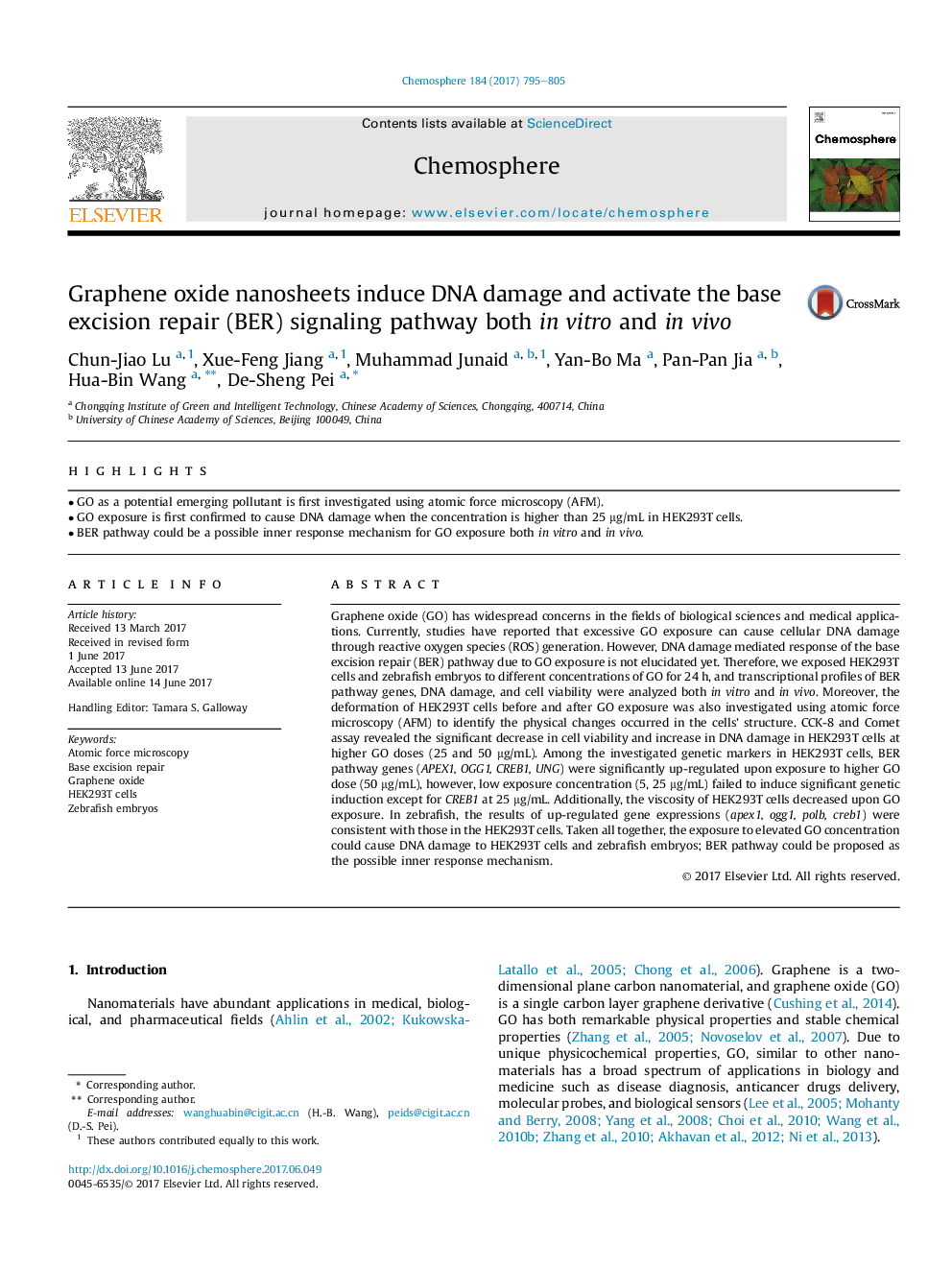| کد مقاله | کد نشریه | سال انتشار | مقاله انگلیسی | نسخه تمام متن |
|---|---|---|---|---|
| 5746265 | 1618787 | 2017 | 11 صفحه PDF | دانلود رایگان |

- GO as a potential emerging pollutant is first investigated using atomic force microscopy (AFM).
- GO exposure is first confirmed to cause DNA damage when the concentration is higher than 25 μg/mL in HEK293T cells.
- BER pathway could be a possible inner response mechanism for GO exposure both in vitro and in vivo.
Graphene oxide (GO) has widespread concerns in the fields of biological sciences and medical applications. Currently, studies have reported that excessive GO exposure can cause cellular DNA damage through reactive oxygen species (ROS) generation. However, DNA damage mediated response of the base excision repair (BER) pathway due to GO exposure is not elucidated yet. Therefore, we exposed HEK293T cells and zebrafish embryos to different concentrations of GO for 24 h, and transcriptional profiles of BER pathway genes, DNA damage, and cell viability were analyzed both in vitro and in vivo. Moreover, the deformation of HEK293T cells before and after GO exposure was also investigated using atomic force microscopy (AFM) to identify the physical changes occurred in the cells' structure. CCK-8 and Comet assay revealed the significant decrease in cell viability and increase in DNA damage in HEK293T cells at higher GO doses (25 and 50 μg/mL). Among the investigated genetic markers in HEK293T cells, BER pathway genes (APEX1, OGG1, CREB1, UNG) were significantly up-regulated upon exposure to higher GO dose (50 μg/mL), however, low exposure concentration (5, 25 μg/mL) failed to induce significant genetic induction except for CREB1 at 25 μg/mL. Additionally, the viscosity of HEK293T cells decreased upon GO exposure. In zebrafish, the results of up-regulated gene expressions (apex1, ogg1, polb, creb1) were consistent with those in the HEK293T cells. Taken all together, the exposure to elevated GO concentration could cause DNA damage to HEK293T cells and zebrafish embryos; BER pathway could be proposed as the possible inner response mechanism.
Journal: Chemosphere - Volume 184, October 2017, Pages 795-805